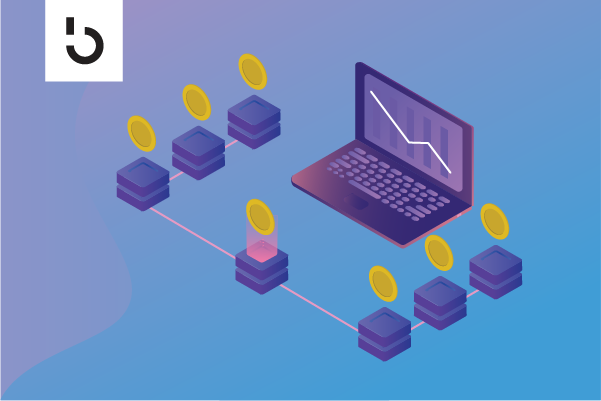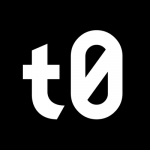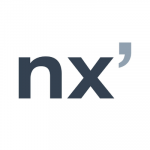
What Is A Security Token?
In simple language, a security token is a blockchain-based “share” of an underlying asset, such as a company, real estate, or gold. A useful analogy is buying a share of Apple stock, making you the owner of a small piece of Apple. A security token is similar to that share of Apple stock — but capable of much more. (Think of it as a smart stock.)
When companies launched the Initial Coin Offering as a business model, they created several tokens and then, hopefully, watched their value rise based on the strength and popularity of the underlying platform. That rising value allowed trading and investment, giving the founders startup capital and allowing them to raise money in the future by selling tokens for cash.
It’s this investment mechanism, an almost carbon-copy of the Initial Public Offering (IPO) model, that caught the attention of regulators.
Which Tokens Are Security Tokens?
Most of the tokens in circulation are security tokens. As former SEC Chairman Jay Clayton explained during his testimony to Congress, virtually every token released as part of an ICO is a security token. That the companies called them “utility tokens” doesn’t matter. They meet the SEC’s test for a regulated securities product, so they are no different (legally) than flooding the market with shares of stock.
The SEC has always had a loose, evolving definition of securitization, in a sense borrowing the Supreme Court’s attitude toward pornography. (“I know it when I see it.”)
- There are cases where an asset is clearly securitized, such as a share of stock.
- There are cases where an asset is clearly not securitized, such as a loaf of bread. These are called commodities.
- Then there’s the great big grey area in between.
What is a Security, Anyway? The Howey Test
The Securities Exchange Act of 1934 lists several examples of securities in action, but the clearest definition comes from the case SEC vs. Howey. An asset counts as a security if it involves:
- Consumer investment,
- In a common enterprise,
- With the expectation of profit derived primarily from the work of others.
Simply stated, a security is an investment in someone else’s effort. This is why a share of stock is a security because you put money in and make a profit off the company’s hard work. This is how most investors see blockchain tokens: they are buying into a project that they hope will rise in value, like a share of stock.
The SEC has made it clear that tokens don’t have to confer ownership in anything to meet the Howey Test. All that matters is that investors buy the tokens expecting to then profit off of the performance of the underlying company. Ownership is optional.
The truth is, every blockchain company already knows this. The ICO business model is based on attracting investors who pay good money in the hopes that they can sell this token for a profit. They have invested money in the company and its platform. That’s a security.
Rise of the STO
In traditional markets, companies offer their shares in exchange for capital through Initial Public Offerings or IPOs. However, the cryptocurrency world has its alternative, the Initial Coin Offering, or ICO (also known as an IDO, or Initial DEX Offering). An ICO or IDO is a crowdsourced fundraising event used by blockchain developers to launch new tokens and services.
Unlike IPOs, investors in an ICO or IDO do not get ownership share in the entity offering the product. Instead, they get ownership of tokens whose worth is solely determined by the level of demand in the market.
It is a high-risk, speculative investment where buyers are betting on the value of the token/coin to increase in the future. And ICOs/IDOs also suffer from poor regulation and have a history of significant scams. This is where Security Token Offerings (STOs) can make a huge difference.
Like the other two, STOs are events where investors are issued a security token/cryptocurrency. The process takes place on cryptocurrency exchanges, and the proceedings are recorded on a public blockchain.
An STO is like a hybrid of IPOs and ICOs – combining the best aspects of both to deliver a superior product. For example, IPOs share the reassurance of a security contract and proper regulations. On the other hand, they share the same blockchain DNA as ICOs – bringing the advantage of speed, transparency, and security of the distributed ledger technology.
Along with the SEC, regulators in major markets like the UK and Switzerland have released guidelines providing regulatory clarity regarding the issue of STOs. In all these markets, STOs have become hugely popular among investors due to the added security and protection offered by the financial regulations.
Security Token Offering vs. Initial Coin Offering
ICOs and STOs share the same blockchain technology and basic process. But that is where the similarities end. From the type of token issued to the level of compliance, ease of launch, and target audience, there are significant differences between ICOs and STOs.
Before we take a closer look, here is a handy table that illustrates some of the main differences:
| Features | ICO | STO |
| Type of Token Offered | Utility Token | Asset-backed security token |
| Regulated | No | Yes |
| Compliance Requirements | Low/Zero | Very High |
| Target Audience | General Public | Accredited Investors |
| Risk Level for Investor | Very High | Low |
The origin of most of the differences between ICOs and STOs is the coin/token offered. A utility coin is not projected as an investment product – its purported role is to provide access to blockchain apps and other native services. Due to this reason, strict financial regulations don’t apply to ICO launches.
Blockchain projects and companies can launch an ICO with relative ease. All they need to do is drum up some interest among potential investors through online and social media campaigns. And they are free to attract investments from anybody – institutional investors, high-net-worth individuals, and the general public.
But an STO does not have any of these luxuries. Since the product offered is an asset-backed security, it falls under the ambit of SEC regulations. As a result, compliance is strict and time-consuming for STOs. Further, the token creators can only sell it to accredited investors and other SEC-approved investment firms.
While blockchain firms will undoubtedly find it much easier to launch an ICO, they would then be losing out on some of the key advantages offered by STOs. An ICO token is a high-risk investment – it does not provide ownership of anything of tangible value to the owner. Therefore, it is not an attractive option for serious investors.
In stark contrast, an STO is a relatively low-risk investment option backed by SEC regulations. Ownership of the security token confers ownership over a particular security/asset in the real world – something which has an intrinsic value, unlike a newly launched utility token. For institutional investors, an STO is far more attractive than an ICO.
The Future of the STO
2021 was arguably the year of the Non-Fungible Token (NFT). Numerous enterprises, artists, content creators, and sports teams showed great interest in entering the cryptocurrency space via NFTs to generate value. The trend clearly indicates increasing mainstream interest in the cryptocurrency space.
As the continued volatility of popular cryptos attracts new investors, regulators worldwide are initiating crackdowns. China has banned all crypto trading and mining, while its neighbor India is mulling similar action against utility tokens.
In the US, the Biden administration and the SEC have also launched several measures targeting cryptos, particularly stablecoins. As these measures initiate a cooldown on ICOs and traditional cryptos, security tokens could emerge as the clear winners in the blockchain investment landscape.
As more regulators actively engage with the cryptocurrency market, security tokens will emerge as the big winners since they combine the best of both worlds. Further, there is a void in the crypto market for products that cater to less “adventurous” investors who demand stability and increased security.
Companies seeking to raise capital through innovative means could also focus more on STOs. As a result of all these factors, security tokens are expected to grow into a $167 trillion market by 2030.

How Security Tokens will Change the Markets
Security tokens have the potential to transform traditional securities markets. Even in this digital age, it takes stock exchanges up to two days to process the sale of shares. Just as email and instant messaging replaced postal letters, security tokens can replace traditional shares. With blockchain technology, exchanges can process transactions in a matter of minutes.
Apart from this speed advantage, there are myriad ways in which security tokens can shake up traditional financial markets:
Improve Liquidity
Slower transactions can drastically affect parties involved in a sale, particularly sellers. For instance, the real estate market is highly volatile – a delayed sale could potentially reduce the price, imposing a sort of liquidity penalty on the property owner. With real estate security tokens, we could have smoother, faster sales, unlocking liquidity like never before.
Unlock Capital
With the right kind of compliance, firms may be able to launch global STOs in the future, attracting investors from all over the world. Granted, the regulations involved in such an endeavor could get somewhat complicated, but the potential benefits could be massive and well worth the effort. Companies would be able to raise capital from hitherto untapped sources.
24/7 Security Markets
Traditional markets follow a strict office schedule, closing in the evening and on weekends. This hampers the ability of investors to make moves in time to capitalize on changes in the market. Moreover, it is a highly inefficient system. With blockchain technology, future security token markets could stay open 24/7.
A Unified Platform
Security tokens are incredibly flexible – they can be programmed to link up any asset. This opens up the potential for investors to hold different asset classes on a single digital platform. For example, they could own and manage security tokens for shares, commercial real estate holdings, bonds, and residential assets all on the same blockchain wallet.
Fractional Ownership
Traditionally, markets for certain high-value assets find very few participants due to the high costs of entry. Commercial real estate and art are both excellent examples of such restrictive markets. With the tokenization of these assets, more investors can be attracted to the markets, improving their overall depth and level of activity.
Security Tokens and Taxation
If you trade any blockchain tokens, you should comply with securities regulations. Those tokens are probably investment products, and your profits and losses from trading security tokens will likely be taxed as investment income, and you should approach them as such. Be certain to consult an accountant about how you should reflect this on your tax returns.
Security Tokens vs. Utility Tokens
The SEC has always questioned the legitimacy of utility tokens.
Consider utility tokens like buying those small coins at the arcade. They let you play the game, only work within that arcade, and don’t have any meaningful resale value in the outside world. They are platform-dedicated tokens, which is the utility token in a nutshell. It gives access to the services an ecosystem provides. The token’s value is (or should be) entirely based on the value of those services.
The trouble with this business model is that it is not entirely useful. A pure utility token, which isn’t an investment product but only gives access to the platform, is little more than a coupon. There’s rarely a reason why consumers couldn’t simply purchase access directly.
Instead, the value of a utility token is external resale. By letting investors and platform participants sell the token on an open market, the platform can drive up its value, the profits of its users, and the profits of its investors. For utility token platforms, the ability to sell tokens at a profit is the entire point of the business model.
Regulators have kept open the possibility of a non-securitized utility token, with William Hinman, the head of Corporation Finance, saying that the agency “certainly can imagine a token where the holder is buying it for its utility and not as an investment.” Yet the SEC has not yet seen an ICO release that it considers a commodity. So the utility token is hypothetical, and that’s about it for now.
Security Tokens vs. Equity Tokens
Equity tokens are a class of security tokens. The defining characteristic of an equity token is that it gives holders a share of ownership (or equity) in the underlying company. (Read more about Equity Tokens here.)
Equity tokens are functionally the same as shares of stock. Each represents a percentage of ownership in the company that sold it. In addition, the underlying company will typically issue dividends to holders. This, along with the company’s value, drives the token’s price.
This ownership stake defines an equity token, but, as we mentioned earlier, it is not necessary for a security token. These are simply a subset of a greater class.
Security Tokens vs. Cryptocurrencies
SEC Chairman Jay Clayton has clearly said that bitcoin, Ethereum, and other cryptocurrencies are not securities. They are commodities, the same as ordinary currency trading, for two reasons.
The first is the asset’s purpose. For example, cryptocurrency is released as a medium of exchange. Even though many investors trade currencies like bitcoin for a profit, this is still the primary purpose. Per Clayton, when a product functions “as a replacement for currency, that has been determined by most people not to be a security.”
As Hinman has made clear, the second is the decentralized nature of cryptocurrency projects. These assets don’t represent the work of a coherent, for-profit project such as a company. Instead, their decentralization makes them far more like pure market-driven commodities.
Essentially, the SEC does not consider money a securitized asset. It thinks that cryptocurrency is close enough to traditional money to avoid regulation.

Pros and Cons of Security Tokens
Investors and developers have two main criticisms of security tokens.
The first is that this will slow down the development of blockchain. One of the main reasons the ICO and IDO business models have proved so successful is their agility. Developers can raise money within weeks, sometimes even days, of formally announcing their project. There was little or no friction between potential investors and new blockchain businesses.
Securities law will change that. Unfortunately, complying with the SEC’s multi-step regulatory process will make launching a new token more expensive and relatively time-intensive. Putting hurdles between entrepreneurs and their money will only hinder this burgeoning industry.
The second criticism is that blockchain is too international to regulate effectively. Critics of security tokens argue that this will hurt Americans by forcing them to comply with lengthy processes. In response, companies and investors will simply move their development elsewhere. As a result, businesses will flourish outside of the United States, and this country will be all the poorer for it. The international nature of blockchain development means that this industry moves too quickly and efficiently to regulate in just one jurisdiction effectively.
Top Security Tokens and How To Invest
The security token market is expanding with each passing month. At the moment, there are well over 100 security tokens with a market cap ranging from a few thousand dollars at the bottom of the pile to well over $200 million at the top. And with new STOs expected to launch, this list will only grow. The following security tokens are at the top in terms of market cap:
INX Token (INX)
A major name in crypto trading circles, INX operates multiple platforms focused on cryptocurrencies and other digital assets. Their investment products are aimed at both institutional and retail investors. The INX Token is the most valuable security token as of Q1 2022, with a market cap of close to $240 million. It provides holders with an annual 40% dividend on positive net operating cash flows on the INX platform.
Overstock Token – OSTKO)
Overstock is a major online furniture retailer based near Salt Lake City, Utah. The company’s security token was launched on its tZERO blockchain network and has a market cap of around $174 million. Investors holding the Overstock shares are awarded the OSTKO token as a dividend distribution. The tokens were awarded at a ratio of 1 per 10 shares owned.
Blockchain Capital (BCAP)
Formed in 2013, Blockchain Capital is a VC firm focusing on the crypto industry. The company is based in San Francisco. BCAP is the world’s first security token, launched back in 2017. As of 2022, it is the third biggest security token with a market cap of $80 million. Trading on the INX securities platform, the token portfolio has a mix of crypto assets, traditional equity, bitcoin, and network equity.
tZERO (TZEROP)
The tZERO blockchain was launched by e-commerce firm Overstock in 2017 with an ICO for the native tZEROP token. Over time, the token has evolved and currently works as a security token, paying company dividends to owners. It pays out 10% adjusted gross revenue of Overstock every quarter and is open to internationally accredited investors. The 2022 market cap of the
token is roughly $60 million.
Exodus (EXOD)
Exodus Movement Inc is a well-known operator of the secure Exodus cryptocurrency wallet/platform. The company is based in Nebraska and has its security token on the Algorand blockchain. The EXOD token is traded on the Securitize platform and has a market cap of close to $48 million. Token holders get ownership of Class A Shares from Exodus.
Top Security Token Platforms
Most security tokens are open to accredited institutional investors and significant individual investors. These tokens trade on special digital security trading platforms, otherwise known as Security Token Exchanges. As of 2022, North American investors have access to four major live security token exchanges, all of them based in the United States.
 tZERO
tZERO
The tZERO blockchain platform started as a subsidiary of the eCommerce giant Overstock. It supports 15 major cryptocurrencies and currently has four security tokens on the trading platform – TZROP, OSTKO, EXOD, and ASPD. The security trading platform is open to both retail and accredited investors in the US, as well as global accredited investors.
 INX
INX
Owned by Gibraltar-based INX group, the security token trading platform is open to global accredited investors. Apart from its native security token INX, five others are currently available on INX – SPiCE VC, BCAP, Protos, Science Blockchain, and 22x Fund.
 ADDX
ADDX
ISTOX was a Singapore-based private capital firm that rebranded itself as ADDX in 2021. The platform offers investors access to dozens of new and growing security tokens, ranging from digital asset funds to private credit funds, company shares, and more.
 Nxchange
Nxchange
Nxchange is a Dutch security token trading platform with a focus on diversity. The platform offers investors the freedom to pick securities based on different “themes” like emerging technologies, impact investing, and real estate. As of 2022, it provides around four investment options – Forest Living, Startup Bootcamp Sustainability, The Share Council, NPRM Groep.
Want to know about our top crypto picks, before the market does? Subscribe to our daily Bitcoin Market Journal newsletter.

